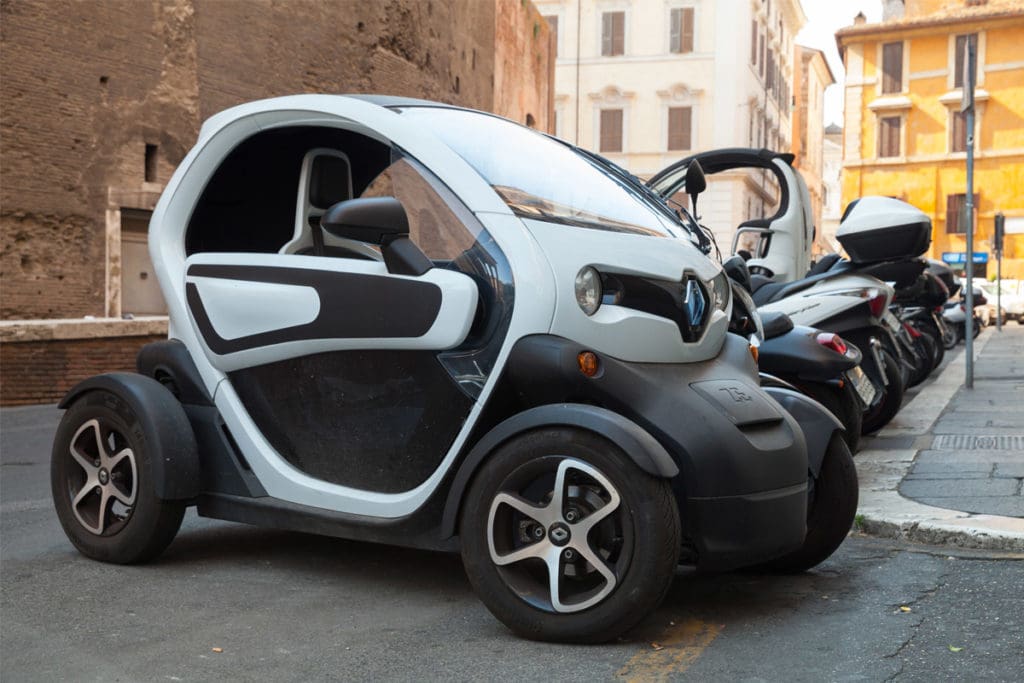Dutch Study Says Longer is Better for Emission Reductions

Arnhem, Netherlands
Development of light electric vehicles (LEVs) conducive to longer journeys should be a priority to maximise emission reductions, according to a recent report by the Netherland’s LEV Knowledge Centre.
It says LEVs replacing car trips up to 15km would eliminate 70% of car journeys, and could make many cities almost free of cars and particulates that pollute the atmosphere.
However, journeys of more than 15km account for over 75% of the kilometres travelled, highlighting the need for LEVs suitable for longer distances – including the ability to use them on motorways.
“When you consider that the extremely safe body and cage construction of a Formula 1 car weighs less than 40kg, there are many opportunities here, technically speaking, but this goes against the current shift towards ever larger passenger cars,” according to the report, Transition with LEV: The Car Out of Town & Then What?
“The benefits of switching from cars to LEVs in terms of CO2 emissions and particulate matter depend very much on the type of LEV and the length of the journey being replaced.”
The white paper lists current knowledge about LEVs and formulates responses to challenges and pain points based on three themes: Business and Service, People and Technology, and Policy and Mobility.
“This will lead to a future vision on the possible role of LEVs in the realisation of a truly pleasant living environment and a matching mobility system,” it says.
It quotes Global MicroMobility Market estimates in 2021 that the global market size for micromobility will grow from US$28 billion (A$39.65 billion) in 2021 to US$70 billion (A$99.13 billion) in 2028, while the market for charging infrastructure will climb from US$4 billion (A$5.66 billion) to US$17 billion (A$24.06 billion) over the same period.
Tailored to Users
Transition with LEV says in general the development of LEVs must be strongly guided by the needs and desires of users and non-users.
“The relationship between people and mobility is mainly seen from the perspective of the vehicle. But the interconnectedness between people and means of mobility is more complex when the perspective is broadened,” it says.
While LEVs are a new phenomenon, it is important to think proactively about human-technology relationships – similar to the connection people have with cars – and the impacts LEVs can have on users, other people in communities, and the mobility system.
This extends beyond the vehicles’ physical and digital designs, to include road safety, vehicle parking, sustainable production, increased mobility to vulnerable groups and public health.
It says the success of the LEV industry will depend significantly on the development of seamless MaaS (mobility as a service), particularly with multimodal networks and associated apps.
“As the development of LEVs is still in its infancy, this offers fantastic innovation opportunities to design the ideal mix and design that responds spot-on to user needs and connects with MaaS developments,” according to the report.
It says existing apps are currently too fragmented in linking users to all the MaaS possibilities, which also need to be more seamless.
However, progress in this area suggests it is just a “matter of time before MaaS will bring about this breakthrough”.
While highlighting the importance of minimising the clutter of parked LEVs in public spaces and the need, Transition with LEV acknowledges the investments by start-ups and large companies to develop systems that allow e-scooters to travel autonomously to designated parking areas.
Microcars
The report says microcars could be an important alternative as people move away from cars.
“The love for an ‘own-house on wheels – good seat, radio on, dry and nice and warm’ in combination with ‘economical and easy parking’ are likely to be important temptations for all age groups,” it predicts.
Transition with LEV also says a strong maintenance market for LEVs will also be important for the micromobility to flourish.
“Two-wheeler repair shops are insufficiently equipped for complex electro-technical work and are faced with a huge staff shortage. The market itself, together with colleges and universities of applied sciences, will have to take the initiative for both vehicle and battery technology,” it added.
The recommendation coincides with an announcement by prominent car servicing company Kwitfit that it is opening its first branch dedicated to the maintenance of electric vehicles.
Kwikfit is opening its first e-service branch in Amsterdam and will apply its quick service model to services for e-bikes at other branches.
The Overtoom branch in Amsterdam will serve as a “test lab” for maintenance services for e-bikes, microcars and other LEVs by Kwikfit, which enables customers to make appointments online and get assistance within an hour.
Transition with LEV also points to the role government can play to encourage the transition to LEVs.
“The government can influence developments from different roles,” it explains.
“As a legislator, it can make things possible or forbid them, as a subsidiser it can sponsor them, as a customer it can be a launching customer, and as a manager of public space it can facilitate them.
“In this way, developments can be accelerated or delayed and guided in the right direction.”
It says that influence includes the provision of multimodal micromobility services in locations where it is unviable to provide more traditional forms of public transport.
“Investing in micromobility provides relief in places where public transport is under pressure due to an excess or shortage of passengers,” the report explains.
“In any case, it is important to coordinate the supply of shared vehicles and traditional forms of public transport.”
In what will be a surprise to people who view the Netherlands as an active transport success story, the report said government regular in that country is blocking the adoption of e-scooters and the expansion of cargo bikes.
Small-wheeled share scooters, prominent in a number of cities around the world, do not comply with Dutch regulations and share services with large-wheeled scooters are operating on a limited scale.
